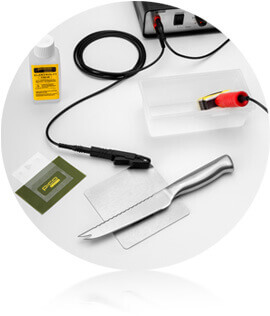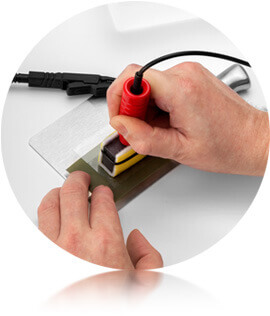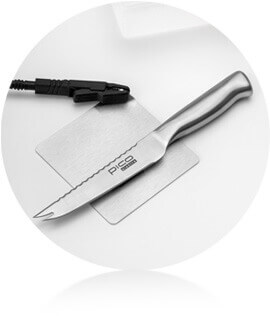Metal Etching
Electrochemical etching process for all etchable, conductive metal products - Etch-marking with PICO elektra
The principle
The electrochemical etching process was developed to streamline the marking of conductive metals. No other process allows such quick, economical and problem-free etching of products made from hard metal, stainless steel, tool steel, zinc, aluminium and brass or with chrome-plated or nickel-plated surfaces, without impairing the structure of the material. The process is an electrochemical one involving a combination of electrical current, time, electrolyte and the material itself.
Application
The electrochemical etching process is used for applying company logos, product designations, dimensional details, manufacturing data, serial numbers, inspection labels, bar codes, functional symbols, assembly and installation instructions and much more. The etching process can be applied manually or semi-automatically in connection with a suitable machine or unit.
Examples of etchable products
Medical and surgical instruments, steel items of all types, fittings, household implements made of stainless steel, containers in the food-processing industry, assemblies for the car industry, pipes, sheet metal, lathe-turned parts etc.
Three quick and easy steps to a successfully etched marking











